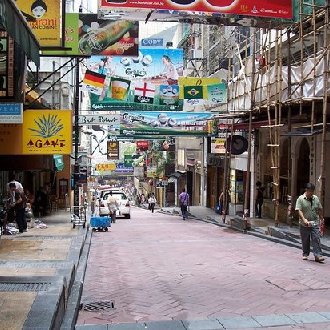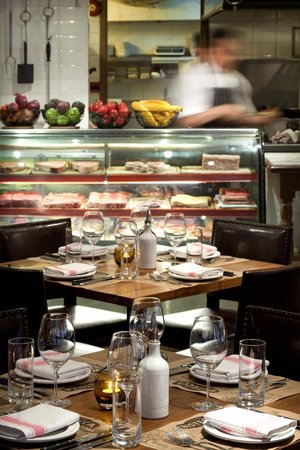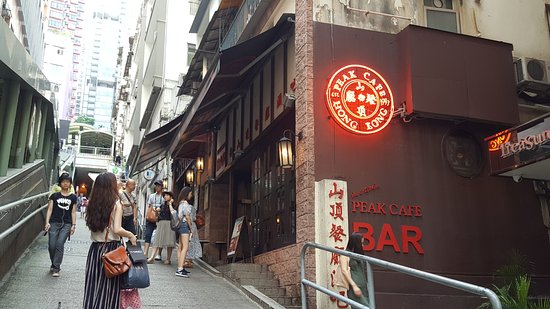Introduction:
Soho is an area of the City of Westminster and is part of the West End of London, England. Long established as an entertainment district, for much of the 20th century Soho had a reputation as a base for the sex industry in addition to its night life and its location for the headquarters of leading film companies. Since the 1980s, the area has undergone considerable gentrification. It is now predominantly a fashionable district of upmarket restaurants and media offices, with only a small remnant of sex industry venues. Soho is a small, multicultural area of central London; a home to industry, commerce, culture and entertainment, as well as a residential area for both rich and poor. It has clubs, including the former Chinawhite nightclub; public houses; bars; restaurants; a few sex shops scattered amongst them; and late-night coffee shops that give the streets an "open-all-night" feel at the weekends. Record shops cluster in the area around Berwick Street, with shops such as Blackmarket Records and Vinyl Junkies. On many weekends, Soho is busy enough to warrant closing off some of the streets to vehicles. Westminster City Council pedestrianised parts of Soho in the mid-1990s, but later removed much of the pedestrianisation, apparently after complaints of loss of trade from local businesses. The name "Soho" first appears in the 17th century. Most authorities believe that the name derives from a former hunting cry.[1][2] James Scott, 1st Duke of Monmouth, used "soho" as a rallying call for his men at the Battle of Sedgemoor on 6 July 1685,[3] half a century after the name was first used for this area of London. The Soho name has been imitated by other entertainment and restaurant districts such as Soho, Hong Kong; Soho, Málaga; SOHO, Beijing and Palermo Soho, Buenos Aires. SoHo, Manhattan gets its name from its location SOuth of HOuston Street, but is also a reference to London's Soho.[4] Soho has an area of about one square mile (2.5 km2), and is now usually considered to be the area bounded by Oxford Street to the north, Regent Street to the west, Leicester Square to the south and Charing Cross Road to the east. However, apart from Oxford Street, all of these roads are 19th-century metropolitan improvements, so they are not Soho's original boundaries. It has never been an administrative unit, with formally defined boundaries. The area to the west is known as Mayfair, to the north Fitzrovia, to the east St Giles and Covent Garden, and to the south St James's. According to the Soho Society, Chinatown, the area between Leicester Square to the south and Shaftesbury Avenue to the north, is part of Soho, although some consider it a separate area. Soho is part of the West End electoral ward which elects three councillors to Westminster City Council. In the Middle Ages, what is now Soho was known as St Giles Field, a farmland belonging to the Convent of Abingdon and the master of Burton St Lazar Hospital in Leicestershire, who owned a leper hospital in St Giles in the Fields.[5] In 1536, the land was taken by Henry VIII as a royal park for the Palace of Whitehall.[6] In the 1660s the Crown granted Soho Fields to Henry Jermyn, 1st Earl of St Albans. He leased 19 of its 22 acres (89,000 m2) to Joseph Girle, who gained permission to build and promptly passed his lease and licence to bricklayer Richard Frith in 1677. Frith began the development. In 1698 William III granted the Crown freehold of most of this area to William Bentinck, 1st Earl of Portland. Meanwhile, the southern part of Soho was sold by the Crown in parcels in the 16th and 17th centuries, with part going to Robert Sidney, Earl of Leicester. Despite the best intentions of landowners such as the Earls of Leicester and Portland to develop the land on the grand scale of neighbouring Bloomsbury, Marylebone and Mayfair, Soho never became a fashionable area for the rich. Immigrants settled in the area, especially French Huguenots who poured in from 1688, after which the area became known as London's French quarter.[7] The French church in Soho Square was founded by Huguenots in the 17th century. By the mid-18th century, the aristocrats who had been living in Soho Square or Gerrard Street had moved away. Soho's character stems partly from the ensuing neglect by rich and fashionable London, and the lack of redevelopment that characterised the neighbouring areas.
No.9 subway
Soho is an area of the City of Westminster and is part of the West End of London, England. Long established as an entertainment district, for much of the 20th century Soho had a reputation as a base for the sex industry in addition to its night life and its location for the headquarters of leading film companies. Since the 1980s, the area has undergone considerable gentrification. It is now predominantly a fashionable district of upmarket restaurants and media offices, with only a small remnant of sex industry venues. Soho is a small, multicultural area of central London; a home to industry, commerce, culture and entertainment, as well as a residential area for both rich and poor. It has clubs, including the former Chinawhite nightclub; public houses; bars; restaurants; a few sex shops scattered amongst them; and late-night coffee shops that give the streets an "open-all-night" feel at the weekends. Record shops cluster in the area around Berwick Street, with shops such as Blackmarket Records and Vinyl Junkies. On many weekends, Soho is busy enough to warrant closing off some of the streets to vehicles. Westminster City Council pedestrianised parts of Soho in the mid-1990s, but later removed much of the pedestrianisation, apparently after complaints of loss of trade from local businesses. The name "Soho" first appears in the 17th century. Most authorities believe that the name derives from a former hunting cry.[1][2] James Scott, 1st Duke of Monmouth, used "soho" as a rallying call for his men at the Battle of Sedgemoor on 6 July 1685,[3] half a century after the name was first used for this area of London. The Soho name has been imitated by other entertainment and restaurant districts such as Soho, Hong Kong; Soho, Málaga; SOHO, Beijing and Palermo Soho, Buenos Aires. SoHo, Manhattan gets its name from its location SOuth of HOuston Street, but is also a reference to London's Soho.[4] Soho has an area of about one square mile (2.5 km2), and is now usually considered to be the area bounded by Oxford Street to the north, Regent Street to the west, Leicester Square to the south and Charing Cross Road to the east. However, apart from Oxford Street, all of these roads are 19th-century metropolitan improvements, so they are not Soho's original boundaries. It has never been an administrative unit, with formally defined boundaries. The area to the west is known as Mayfair, to the north Fitzrovia, to the east St Giles and Covent Garden, and to the south St James's. According to the Soho Society, Chinatown, the area between Leicester Square to the south and Shaftesbury Avenue to the north, is part of Soho, although some consider it a separate area. Soho is part of the West End electoral ward which elects three councillors to Westminster City Council. In the Middle Ages, what is now Soho was known as St Giles Field, a farmland belonging to the Convent of Abingdon and the master of Burton St Lazar Hospital in Leicestershire, who owned a leper hospital in St Giles in the Fields.[5] In 1536, the land was taken by Henry VIII as a royal park for the Palace of Whitehall.[6] In the 1660s the Crown granted Soho Fields to Henry Jermyn, 1st Earl of St Albans. He leased 19 of its 22 acres (89,000 m2) to Joseph Girle, who gained permission to build and promptly passed his lease and licence to bricklayer Richard Frith in 1677. Frith began the development. In 1698 William III granted the Crown freehold of most of this area to William Bentinck, 1st Earl of Portland. Meanwhile, the southern part of Soho was sold by the Crown in parcels in the 16th and 17th centuries, with part going to Robert Sidney, Earl of Leicester. Despite the best intentions of landowners such as the Earls of Leicester and Portland to develop the land on the grand scale of neighbouring Bloomsbury, Marylebone and Mayfair, Soho never became a fashionable area for the rich. Immigrants settled in the area, especially French Huguenots who poured in from 1688, after which the area became known as London's French quarter.[7] The French church in Soho Square was founded by Huguenots in the 17th century. By the mid-18th century, the aristocrats who had been living in Soho Square or Gerrard Street had moved away. Soho's character stems partly from the ensuing neglect by rich and fashionable London, and the lack of redevelopment that characterised the neighbouring areas.
No.9 subway
Top Things to Do in Soho

Where is Soho











Reviews (10)